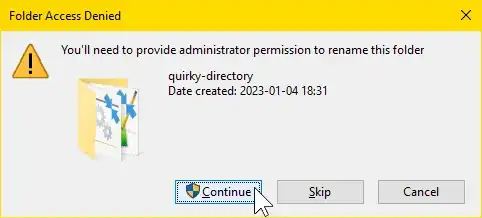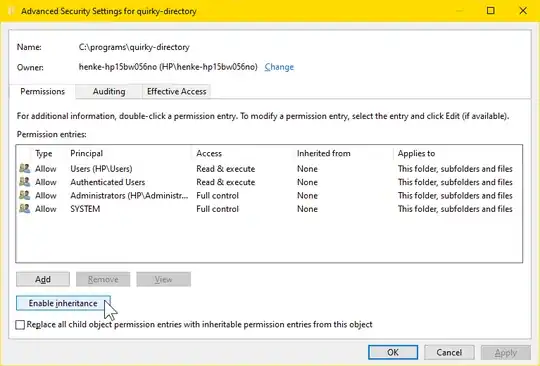When I try to rename (or move) a folder, I get Folder Access Denied,
and
You'll need to provide administrator permission to rename this
folder.
There are three options: Continue, Skip, or Cancel.
See the screenshot below.
It's not a big deal, really.
– I click Continue, and the folder is renamed.
But when this happens frequently, it soon gets rather annoying.
Some prerequisites :
- I am using an administrator account.
- I am the owner of the folder.
- My folder permissions are Full control.
- I have set User Account Control to Never notify.
(Press WinKey+r, copy-paste 1useraccountcontrolsettings, and press Enter.) - The folder is outside both
C:\Program FilesandC:\Program Files (x86).
The behavior is as if the folder were in C:\Program Files,
for example.
I had the same problem a few years ago.
I found a link online that explained how to solve it.
If I recall correctly, it was a simple matter of changing merely one
of the folder properties.
Frustratingly, it seems I never bookmarked that helpful link.
I have to click Continue every time, to rename the folder. How can I avoid this?
Some related questions
- Disable "You'll need to provide administrator permission"
- "You need administrator permission to make changes to this file"
- Permission to copy a file into the 'Program Files' folder
- Can't delete folder as admin
- Can't delete folder, and I am admin. "You need permission …"
- How do I remove the administrator requirement for manipulating files
1 Ctrl+c to copy, and Ctrl+v to paste.

